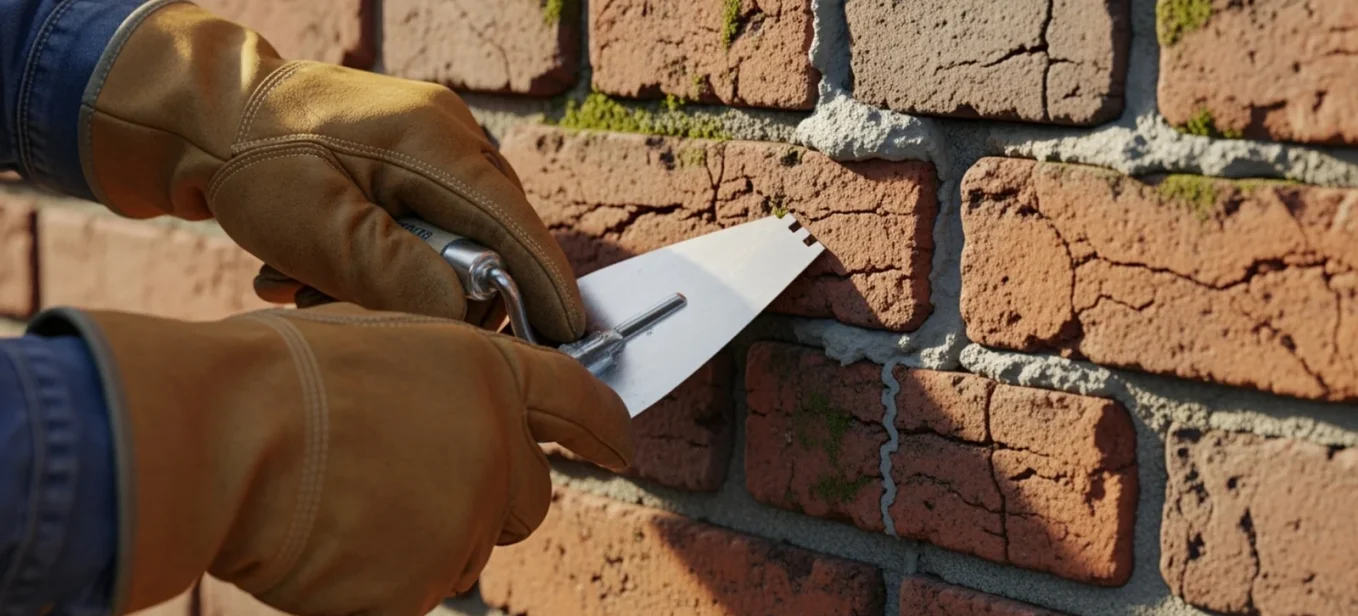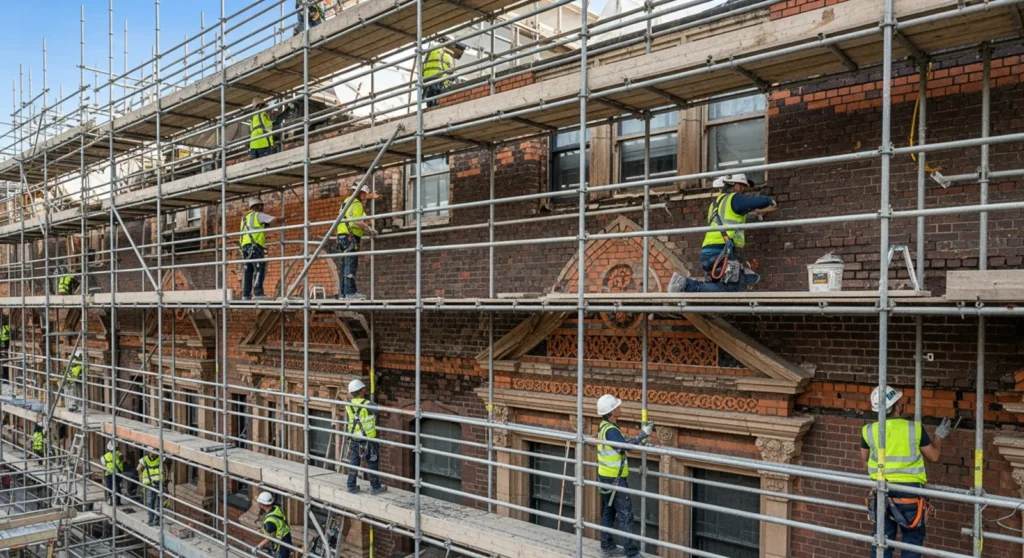
What Is the Difference Between Masonry Repair and Masonry Restoration?
- By: Nova Construction Team
- Published:
- Updated: December 19, 2025
Brick and stone masonry structures are tough. However, maintaining your building’s appearance and strength requires understanding masonry work.
Home and business owners often hear two terms: masonry repair or restoration. Although they may sound similar, these masonry work services are different.
Masonry repair involves fixing smaller, specific problems. This helps prevent further damage to the existing masonry.
Masonry restoration is a much bigger restoration project. It focuses on bringing the masonry structure back to its original appearance or saving historic buildings’ features.
Understanding these differences is crucial for building owners. Picking the right option affects longevity, appearance, and costs over time.
Both services help protect residential and commercial masonry structures. These can weaken from wear and tear, water damage, and age.
What Is Masonry Repair?
Masonry repair fixes specific problems in damaged masonry. Think of it as patching up issues quickly. This prevents small cracks in the mortar from turning into extensive and costly damage.
The main goal is fixing what needs immediate attention. This keeps the structure structurally sound and safe.
Quick repairs help prevent the need for larger projects later. They keep the building functional without changing the facade or making major improvements.
Repairs are often done to maintain existing mortar and brick and mortar elements.
Usual Types of Masonry Repair
Masonry repair covers various small jobs:
- patching cracks in the mortar caused by weather or settling
- plugging gaps that appear over time to prevent water penetration
- replacing cracked or chipped bricks while using materials that match the original construction
- tuckpointing or replacing small amounts of damaged mortar
- applying sealant and waterproof treatments to problem areas
- basic chimney fixes, such as changing cracked caps or broken flue tiles
These jobs focus on limited, damaged spots. For example, a repair might mean swapping a single brick. It could involve patching existing mortar so water damage doesn’t occur.
Acting fast with masonry repairs helps prevent costly mistakes and saves money later.
What Is Masonry Restoration?
Masonry restoration involves larger projects than simple repair. The masonry restoration process aims to restore the building’s masonry to how it looked when the building was built. Restoration is crucial for maintaining historic buildings and aged structures.
If deterioration is widespread, restoration involves comprehensive work. The building may be in need of major intervention. This protects the structure and can greatly improve the facade.
It prevents collapse and increases value for residential properties and commercial properties alike.
Masonry Restoration Process and Main Steps
The masonry restoration process takes more time than simple repairs. A mason typically begins with a complete evaluation of the masonry structure.
Here’s what masonry restoration involves:
- removing old mortar and damaged materials throughout the building
- installing new mortar and materials using high-quality materials that match originals
- complete repointing of all weak mortar joints throughout the existing masonry
- re-facing brick or stone masonry to restore the facade’s appearance and structural integrity
- rebuilding sections like bulging walls if they’re not structurally sound
- restoring special features using materials used in the original construction
- replacing stone sills and headers on doors or windows
- adding reinforcement to retrofit the structure if required by codes
- chemical cleaning and pressure washing to remove discoloration
- applying waterproof treatments and sealant as needed
The restoration project often involves weeks or months of work. This depends on the masonry structure’s size and masonry needs.
The result is a building that maintains its original appearance. It stays structurally sound for decades longer.
How Do Masonry Repair and Masonry Restoration Differ?

Although both methods protect masonry structures, they differ significantly. Let’s examine these contrasts with a direct comparison.
| Feature | Masonry Repair | Masonry Restoration |
|---|---|---|
| Scope of Work | Small, local repairs (cracks, chips, single bricks/mortar joints) | Whole-building fixes, including replacing lots of brick or mortar and restoring details |
| Goal | Stop further damage and keep structure safe | Recover original look and strength, save history, or improve design |
| Techniques | Patching, filling, spot-pointing, caulking | Removing and replacing broad areas of brick/mortar, repointing, rebuilding sections |
| Time/Cost | Quick, less expensive (days or less) | Slower, more costly (weeks, months, or longer) |
| Effect on Appearance | Keeps current look, focuses on blending in repairs | Major visual upgrade, often returns to "like new" |
| Impact on Lifespan | Adds years to repaired spots | Raises whole building's lifespan for decades |
How to Choose Between Masonry Repair and Restoration
Deciding between repair and restoration often requires a professional mason’s assessment. However, building owners can consider several factors:
- Size and type of problem: Small cracks or single damaged elements need repair. Large cracks, missing sections, or extensive deterioration signal restoration needs. If the mortar may be failing throughout, restoration is crucial.
- Building age and history: Structures built before 1980 or historic buildings usually benefit from restoration. This preserves their value and maintains the original construction’s integrity.
- Cause of damage: Problems that recur might indicate deeper structural issues. If water damage, stains, or uneven walls persist, the masonry may need comprehensive restoration rather than repair.
- Budget and future plans: Repairs cost less initially, but repeated fixes add up. Restoration is extensive and costly upfront but often prevents future problems. If maintained well and done properly, restoration provides better long-term value.
How Nova Construction Can Help You
Whether your masonry structure needs repair or restoration, consult a professional mason. We can help you evaluate your building’s masonry condition and tell the difference between what needs immediate repair versus comprehensive restoration.
Our qualified masons will recommend the safest, most cost-effective approach for your specific masonry needs. They’ll use materials that match your existing masonry and ensure all work is done properly to maintain structural integrity.
Got a project in mind? Let's chat about bringing your construction vision to life!
